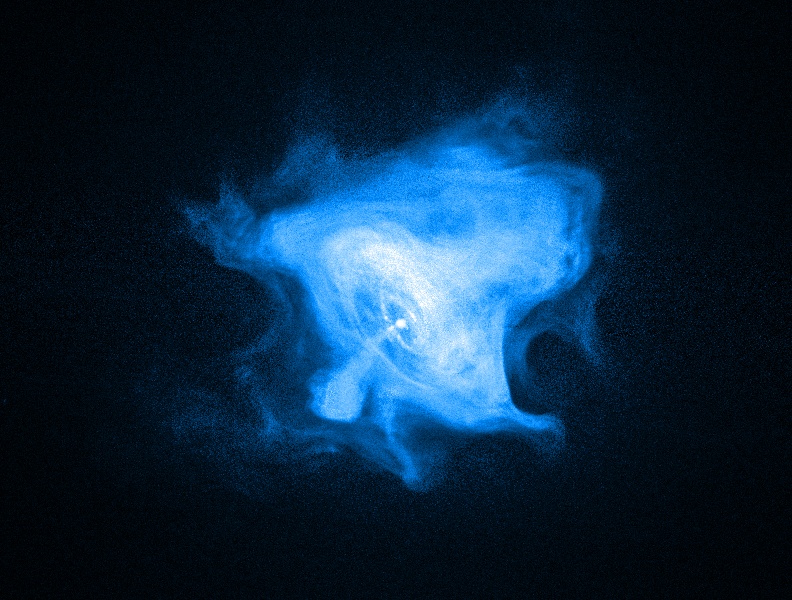CrazyNeutrino said:
Astronomers find the first ‘wind nebula’ around a magnetar
Astronomers have discovered a vast cloud of high-energy particles called a wind nebula around a rare ultra-magnetic neutron star, or magnetar, for the first time. The find offers a unique window into the properties, environment and outburst history of magnetars, which are the strongest magnets in the universe.
more…
This is an excellent little article.
“The pulsar’s fast rotation and strong magnetic field work together to accelerate electrons and other particles to very high energies. This creates an outflow astronomers call a pulsar wind that serves as the source of particles making up in a wind nebula. Making a wind nebula requires large particle fluxes, as well as some way to bottle up the outflow so it doesn’t just stream into space”
“The most famous wind nebula, powered by a pulsar less than a thousand years old, lies at the heart of the Crab Nebula”
The following is the “wind nebula” from the Crab pulsar, as photographed by Chandra. It looks like an “artist’s impression”, but it isn’t, it’s real.

Explanation: The Crab Pulsar, a city-sized, magnetized neutron star spinning 30 times a second, lies at the center of this remarkable image from the orbiting Chandra Observatory. The deep x-ray image gives the first clear view of the convoluted boundaries of the Crab’s pulsar wind nebula. Like a cosmic dynamo the pulsar powers the x-ray emission. The pulsar’s energy accelerates charged particles, producing eerie, glowing x-ray jets directed away from the poles and an intense wind in the equatorial direction. Intriguing edges are created as the charged particles stream away, eventually losing energy as they interact with the pulsar’s strong magnetic field. With more mass than the Sun and the density of an atomic nucleus, the spinning pulsar itself is the collapsed core of a massive star. The stellar core collapse resulted in a supernova explosion that was witnessed in the year 1054. This Chandra image spans just under 9 light-years at the Crab’s estimated distance of 6,000 light-years.
At 6,000 light years, the wind nebula around the Crab pulsar is closer than that around the magnetar at 13,000 light years away. But on the other hand, the wind nebula around the magnetar is bigger, 15 light years across.
Question: How do you tell whether a pulsar has a “wind nebula” or not without direct imaging?

